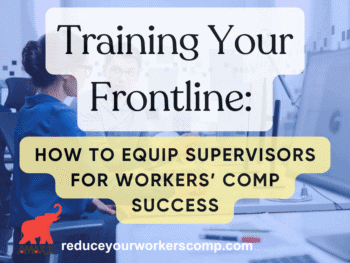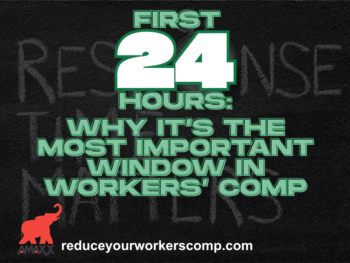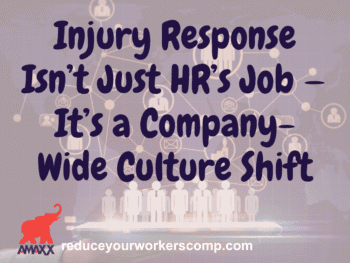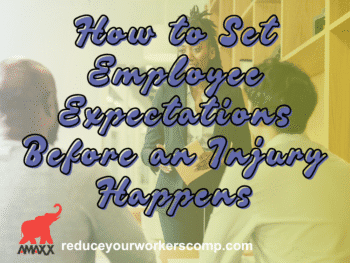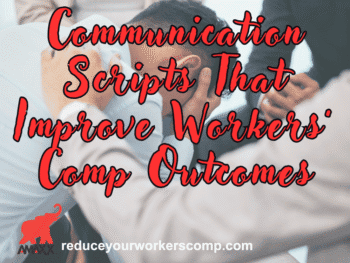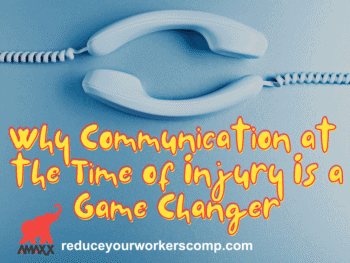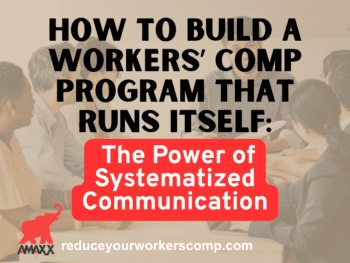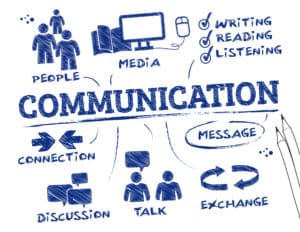
That means it’s up to us to make sure an injured worker gets a clear understanding. Why? Because confusion and misunderstandings about the system drive up claims costs. People are afraid and don’t know how or when they will receive medical care or another paycheck. The way the system has historically worked clearly does not help the situation.
Think about it. There may be notifications from the claims adjuster, claims administrator, third-party administrator, insurer, pharmacy benefit manager, employer, medical provider or the case manager; with questions or information about the DOI, future medicals, impairment ratings, TTD/TPD/PPD, MMI, or FCE. Add to that a few comorbidities and biopsychosocial risk factors and it’s no wonder some cases go south.
Click Link to Access Free PDF Download
“9-Element Blueprint To Create Your Workers’ Comp Employee Brochure”
Effective Communication
Ideally, you want the injured worker engaged in the recovery process so he’s motivated to get back to function and work as quickly as possible. Building trust is key. Training supervisors and managers on communication skills can go a long way to preventing animosity; i.e., delayed recoveries, litigation, etc.
Words
What you say has a big impact on how an injured worker responds to the workers’ comp process. You want to avoid creating animosity. Some tips on what to say (or not) include:
- Don’t start sentences with ‘you.’ You don’t want to make accusations against the injured worker. Even if that is not the intention, sentences that start with ‘you’ may be perceived that way.
- Avoid ‘never’ and ‘always.’ You want to be honest with the injured worker and show you are willing to work with him. Such definitive words may prematurely end a discussion, or provide false hope — neither of which will help.
- Be positive. Use words that exude optimism. Let the worker know her job is not in danger and you are expecting and looking forward to her returning to work as soon as possible.
- Use clear and concise language. The person speaking with the injured worker should have his message set and know what and how he plans to say before the conversation starts.
Tone/Attitude
It’s not only important what you say, but how you say it that matters. As the old adage goes, you catch more flies with honey than vinegar.
- Be supportive. Ask the injured worker how he is doing, not only with his injury but overall. Find out if he’s experiencing any particular hardships with which you might be able to help, such as speaking with family members about the workers’ compensation process. Indicate you are interested in him as a person. Also, talk about what the person can do, rather than what he can’t due because of the injury.
- Be friendly. Be polite and nice. Smiling when you speak is a trick used by radio announcers, as it affects how you come across to others.
Listen
Injured workers are often confused about their injuries and how the workers’ compensation process works. Give them a chance to say and ask what they want. Be open to hearing the injured worker’s point of view. Be an active listener by asking clarifying questions and paraphrasing what the person has said to make sure you understand.
Frequency
It’s imperative to keep the injured worker engaged throughout the claims process. That means maintaining regular communication in whatever forms best meet the injured worker’s needs, whether it be via phone, text, email, letter, etc.
The first contact should be made immediately following an injury, to show the person you care and are there for them. A phone call is typically best at this stage, as it provides for interpersonal communication. It’s also important to let the injured worker know what to expect throughout the claims process. Some organizations have developed brochures that clearly and concisely explain the workers’ compensation process. At the least, you can verbally tell the worker what he can expect.
Ongoing communications should focus on informing the injured worker about the status of his claim, in addition to continuing to show your support and concern. Also, convey the message that the person is still a valued employee. Update him on work-related goings on and send him any newsletters or other communications so he feels he is still part of the workplace. A get-well card signed by coworkers also helps them feel a part of the company.
It’s important that all communication with the injured worker is consistent. You should work with the claims handling team, providers, and others to ensure you are all on the same page.
Summary
Fear, misunderstandings and hurt feelings are prime drivers of adversarial relations between injured workers and employers. By working on communication skills and training all who play a part in the claims process, organizations can ensure their injured workers are on board with their recoveries and return-to-work processes.

Author Michael Stack, Principal, Amaxx LLC. He is an expert in workers compensation cost containment systems and helps employers reduce their work comp costs by 20% to 50%. He works as a consultant to large and mid-market clients, is co-author of Your Ultimate Guide To Mastering Workers Comp Costs, a comprehensive step-by-step manual of cost containment strategies based on hands-on field experience, and is founder & lead trainer of Amaxx Workers’ Comp Training Center.
Contact: mstack@reduceyourworkerscomp.com.
Workers’ Comp Roundup Blog: https://blog.reduceyourworkerscomp.com/
Live Stream WC Training: http://workerscompclub.com/livestreamtraining
©2017 Amaxx LLC. All rights reserved under International Copyright Law.
Do not use this information without independent verification. All state laws vary. You should consult with your insurance broker, attorney, or qualified professional.





